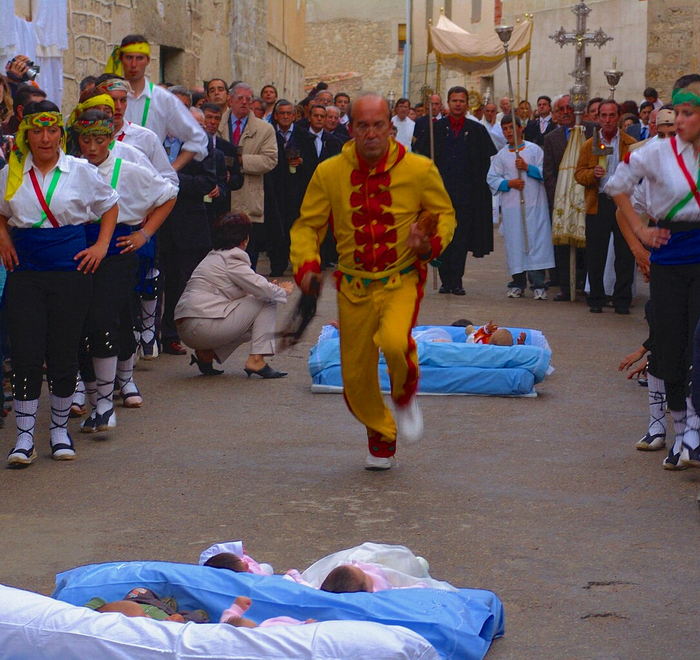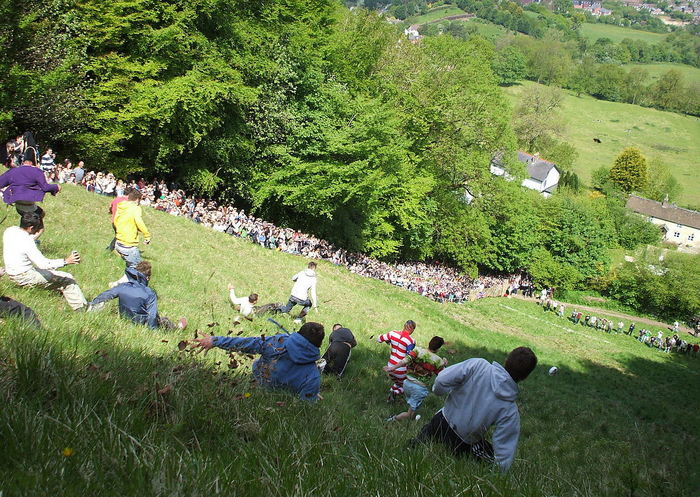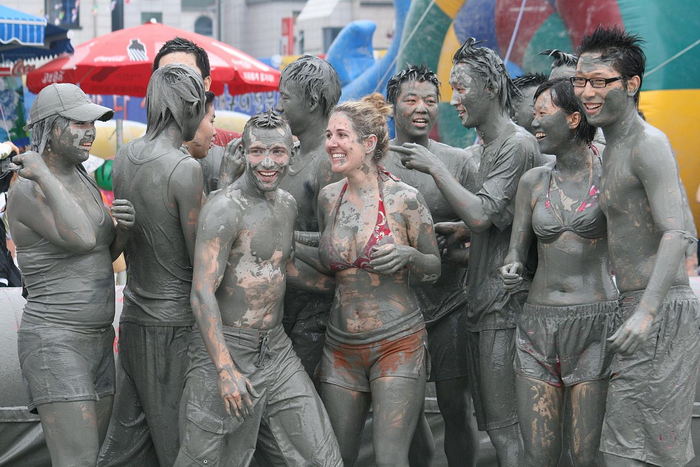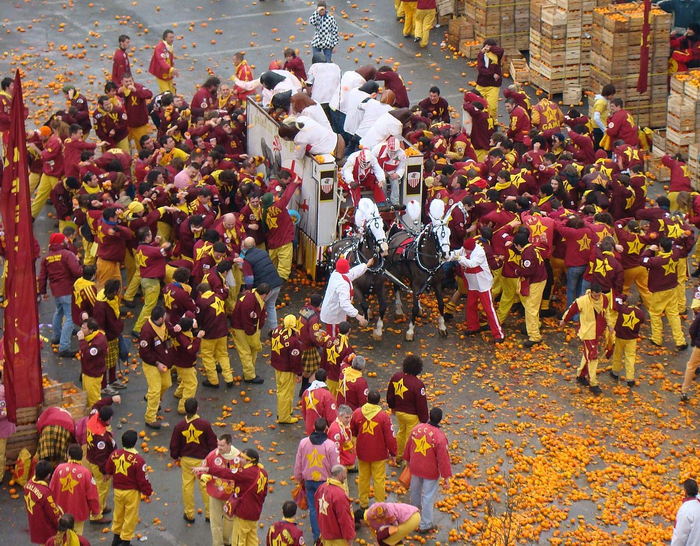The beauty of the world we live in is the sheer variety of cultural traditions that blend history, belief, and community. These practices provide a mirror into the diverse ways humans interpret and interact with the world around them. Some may seem a bit outlandish, even weird culture, while others inspire with their beauty, creativity, and uniqueness.
Unraveling these customs, some funny cultures and strange rituals provoke curiosity and astonishment. For instance, have you ever heard about the village where people communicate through whistles or the town that celebrates New Year’s Eve by throwing furniture out the windows? It’s a broad, weird tradition-filled world out there, and these peculiar customs only prove that reality can indeed be stranger than fiction.
Throughout our exploration, we’ll check out some of these peculiar unique traditions, aiming to foster a greater understanding and appreciation for the richness and diversity of global cultures. By acknowledging the weird and unusual traditions and funny rituals from around the world, we further our understanding of the human race’s intricate tapestry. Remember, it’s all a matter of perspective. One’s routine may be another’s revelation, one’s custom may be another’s conundrum.
10 – Baby Jumping (El Colacho), Spain: A Leap of Faith

Spain seems to have a knack for strange rituals, and the annual El Colacho, or Baby Jumping Festival, is no exception. Held in the village of Castrillo de Murcia since 1620, it’s one of the most unusual traditions you’re likely to come across. Men dressed as the devil run and leap over newborn babies lying on mattresses in the street.
This unique tradition serves as a form of baptism to cleanse the babies of original sin and guard them against illnesses and evil spirits. While it might seem like a weird tradition to many, the villagers view it as a blend of religious faith and local customs.
09 – Dangerous birthday party – India
This is a tradition related to celebrating the birth of a child in the family. This tradition has been observed by some Muslims in the Indian state of Maharashtra for more than five centuries. Those who decide to do this, drop the newborn babies from the wall of the temple at a height of 15 meters. It’s believed that after the fall child’s health becomes stronger, luck comes to him and accompany throughout his life. Also it makes him incredibly brave and clever. Of course, at the bottom of the wall people pull the cloth to catch a child in order to avoid an accident.
08 – Cooper’s Hill Cheese-Rolling, England: A Gouda Tradition

The English countryside, famed for its picturesque landscapes and quaint villages, also hosts one of the most funny rituals around: the Cooper’s Hill Cheese-Rolling event. Part of a unique tradition that dates back hundreds of years, participants from all over the world come to Gloucestershire to chase a 9 lb. wheel of Double Gloucester cheese down a steep hill. This cheese-chasing cultural tradition might sound laughable, but it’s a seriously competitive and somewhat dangerous affair!
Falling, tumbling, and sometimes even flying, competitors chase the cheese, but it’s not about catching it (which is nearly impossible given that it can reach speeds up to 70 mph!). The first person to cross the finish line at the bottom of the hill wins the cheese and bragging rights. While it might appear to be a strange ritual to outsiders, for locals it’s a time-honored tradition that highlights their strong sense of community.
07 – Dirty means happy – Scotland
In some regions of Scotland still exists a medieval wedding tradition. A bride, dressed in a flawlessly white dress, decorated with flowers (and rich in jewelry) completely besmears herself in the mud. This dirt can consist of spoiled foods, soil, flour and honey. In this look, the bride must walk along the main street, bypass the central square, and also ride a horse around the city. Today it’s done, mostly, for the sake of entertainment, but before that people believed that through this tradition a girl cleanses her soul from all earthly sins.
06 – Boryeong Mud Festival, South Korea: A Muddy Affair

If getting dirty sounds like your idea of fun, then the Boryeong Mud Festival in South Korea might be your perfect summer getaway. What started as a marketing ploy to promote Boryeong’s mineral-rich mud cosmetics has turned into one of the world’s most exciting cultural events. Each July, millions of people flock to Daecheon Beach to slip, slide and wrestle in the muddy festivities.
Mud pools, mud slides, mud prisons, and even mud skincare are all part of this funny ritual. It’s an absolute mud-ness! But the Boryeong Mud Festival is more than just a unique tradition. It’s a symbol of the shared human experience, showing that sometimes, we just need to let loose and get a little dirty.
05 – Feast with the dead – Madagascar
The inhabitants of the Republic of Madagascar are extremely attached to their relatives. But sometimes this connection becomes abnormal, especially when it comes to already dead people. Till the present day Malagasy strictly follow the ancient custom and periodically dig up the dead from their tombs, dress in the best clothes and take joint photos with them. To a modern European it will seem wild, and the people of Madagascar believe that such behavior is nothing but a manifestation of love and reverence for those who are already in another world.
04 – Nagoro Doll Village, Japan: A Silent Gathering
Tucked away in the remote valleys of Shikoku, Japan, lies the quiet town of Nagoro. But this is no ordinary village, for Nagoro is populated by dolls, not people. This cultural tradition is the brainchild of Ayano Tsukimi, a local woman who returned to her childhood home and found it largely abandoned. To combat her loneliness and pay tribute to her neighbors who’d moved away or passed on, she started crafting life-sized dolls.
Today, over 350 dolls inhabit Nagoro, making it a uniquely uncanny and poignant tourist attraction. Each doll, placed in scenarios of everyday life, from farming to school lessons, bears an eerie resemblance to a former resident. Far from a weird tradition, this cultural celebration tells a tale of life, loss, and the enduring spirit of community. It’s a testament to the power of art to preserve memories and create a sense of belonging in the face of change.
03 – La Tomatina, Spain: A Ripe Tradition

When you think of Spanish culture, flamenco dancing or mouthwatering tapas might come to mind. But have you ever thought about a town-wide tomato fight? Welcome to La Tomatina, one of the most weird and unusual traditions in Spain. On the last Wednesday of August, the streets of Buñol, a small town near Valencia, become a battleground. But don’t worry – the only ammunition is overripe tomatoes! For approximately one hour, residents and visitors engage in a free-for-all tomato-throwing frenzy. It’s a unique tradition that’s as fun as it is messy.
Originating in the mid-1940s, the genesis of La Tomatina is shrouded in mystery. Whether it began as a local food fight or an anti-fascist protest is still up for debate. What’s certain is that this funny ritual is now a major tourist attraction, drawing folks eager to participate in this high-spirited tomato tossing celebration. It’s an entertaining example of a weird culture event that unites people through joy and good-natured chaos.
02 – Phallic feast – Japan
The Japanese, as practice shows, are rather strange in their customs. And the Japanese holiday of spring fertility is a proof. In early spring, residents of the country gather in the streets of cities (only some cities, since not everyone takes part in the festival) to contemplate the sacred action. The strongest and healthy men get the opportunity to carry through the city a wooden phallus, weighing 25 kilograms. Such a tradition presupposes not only ennobling the land and raising the level of yield, but also brings “fertility to the family”, increasing the birth rate and strengthening families.
01 – The Battle of the Oranges, Italy: A Juicy Tradition

Every February, the peaceful town of Ivrea in northern Italy turns into a battlefield. The weapon of choice? Oranges! The Battle of the Oranges is a historical event, a unique and lively reenactment of a medieval battle. Thousands of townspeople, divided into nine combat teams, throw oranges at each other in a friendly but spirited manner.
The origins of this unique tradition date back to the 12th century, involving a tyrant, a miller’s daughter, and the fiery revolt that ensued. Today, this colorful celebration is the largest food fight in Italy and a must-see cultural spectacle. Despite the mess, it’s a community event that combines history, tradition, and fun in a most unusual way.
Believe it or not, these weird cultures and their funny rituals illustrate the beauty and diversity of human creativity. It shows that while our customs may differ, our capacity for innovation, joy, and community is universal.


